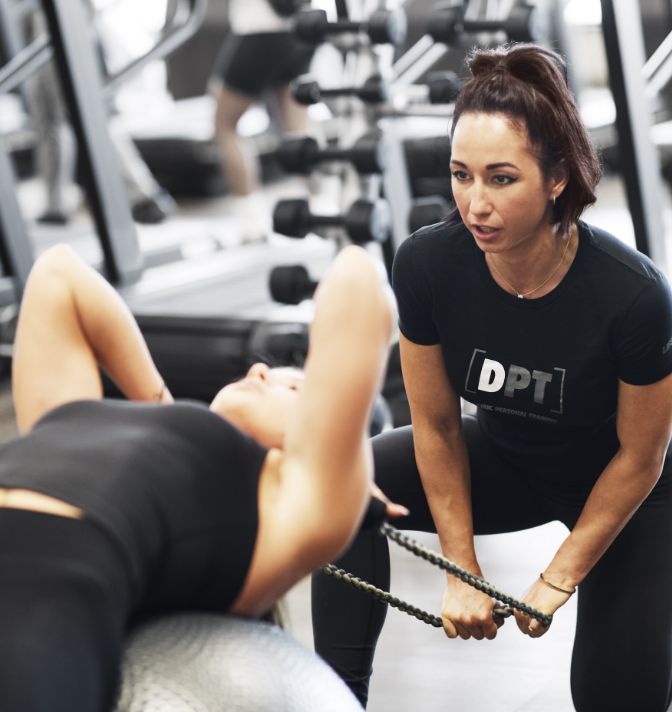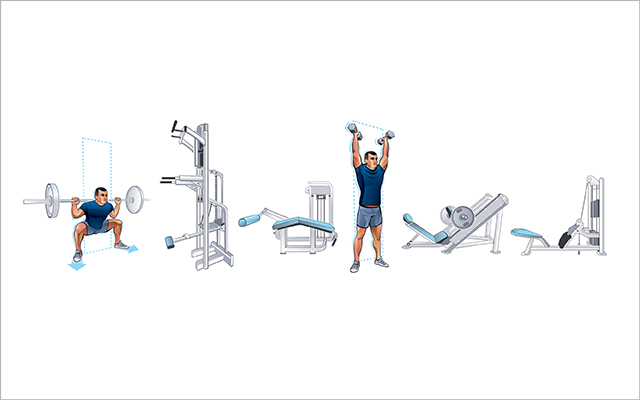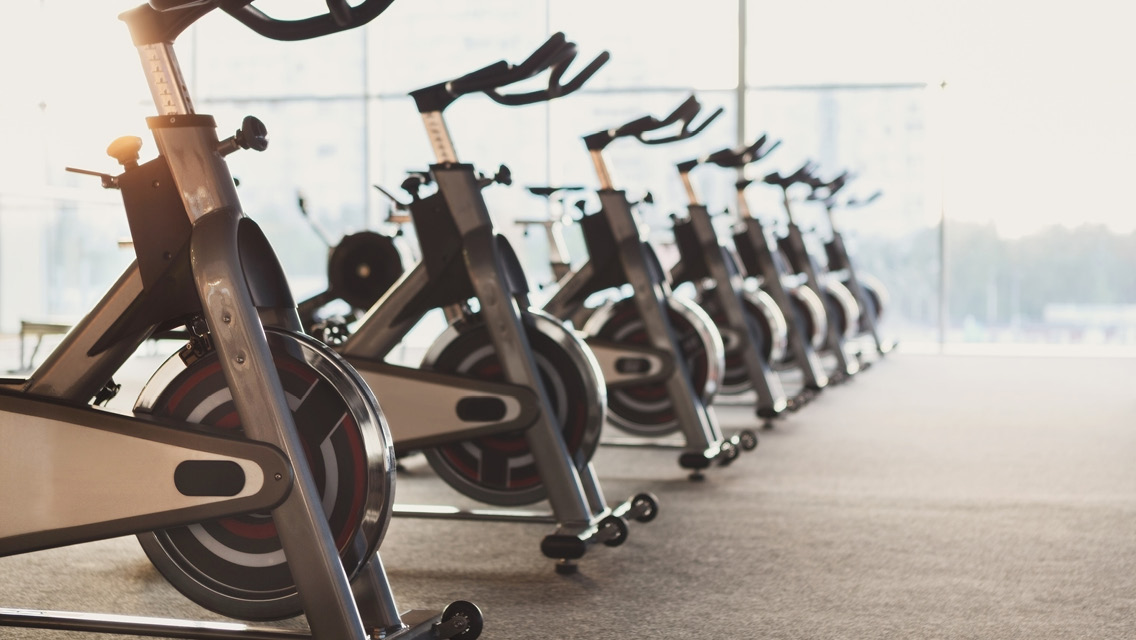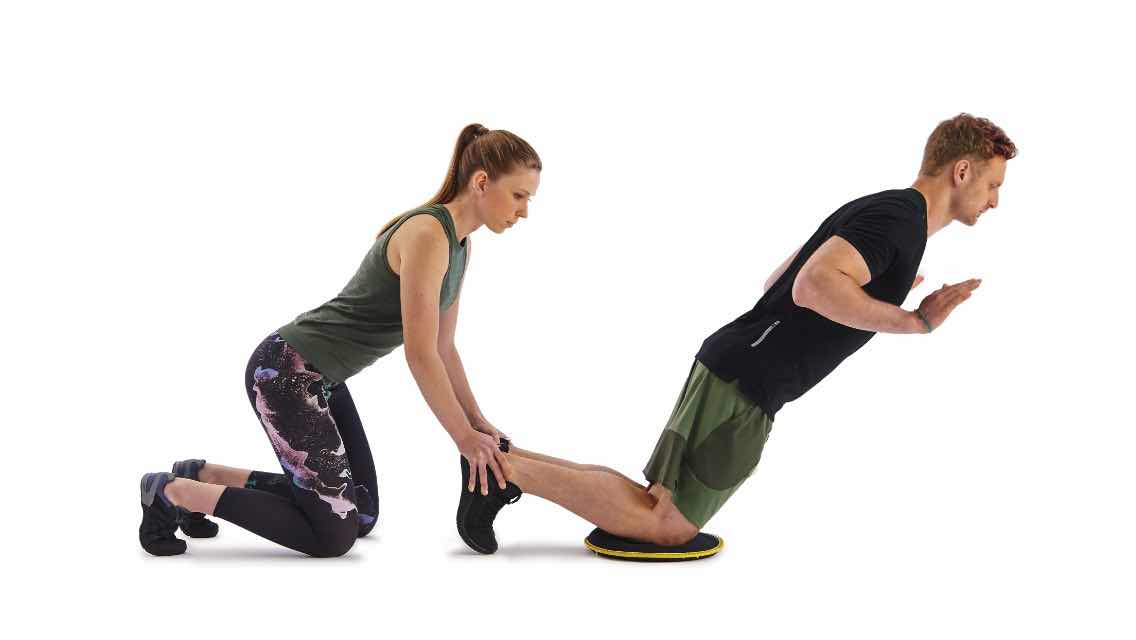When walking onto the fitness floor of a large-scale health club, being greeted by rows of state-of-the-art equipment can be both exhilarating and a bit overwhelming.
While having a multitude of options provides the opportunity for near-endless variety, it also can potentially throw us into analysis paralysis. And if we’re not careful, it can be easy to fall into a stagnant routine or pattern of using the same few trusty machines and methods.
This time of year is always good for refreshing your exercise regimen, and I’d encourage you to add in something new to challenge your body and fitness ability in novel ways. If you aren’t sure where to start with spicing up your routine, here are five machines that you likely have walked by countless times without hopping on but that may provide you with some surprising benefits.
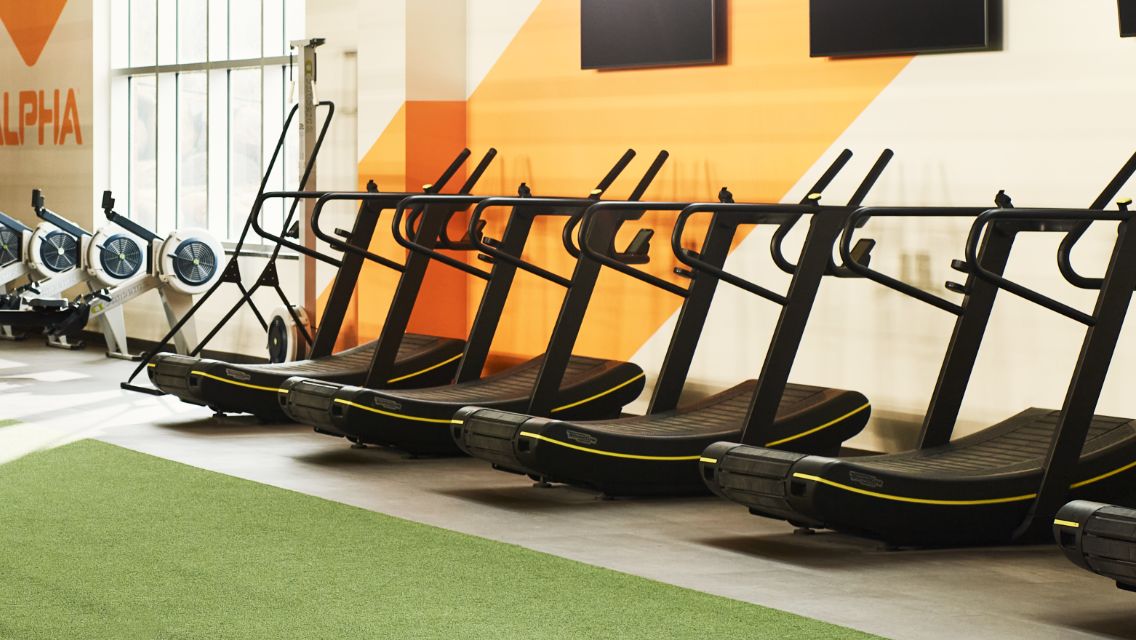
1. Technogym® SKILLMILL™: Sled-Push Mode
If you’ve seen sleds loaded up with weight plates being prowled across turf outside, you may be surprised to learn that you can do this exact movement — and reap its benefits — without being quite as out in the open and while having a bit more trackable data to assess your performance.
The SKILLMILL slatted treadmills have a best-kept secret: the sled-push mode feature. With this, you’re able to set the weight and distance you want to push. Since the treadmill screen is on while the belt moves freely in this mode, it tracks the power you produce and how many intervals you have completed.
It’s also one of the best forms of high-intensity interval training when compared to traditional treadmill sprints, since there’s no lag time getting up to high intensity and no fear of falling off the back from a fast-moving belt. I find that for my clients, this pushes them to their limits of intensity during the intervals, and they often feel like after using this sled push that they’ve experienced true interval training the way that it’s supposed to feel.
2. Technogym® SKILLMILL™: Cadence-Running Mode
Although this uses the same piece of equipment outlined above, it may as well be considered a different machine when using the cadence running feature since the audience and use is so much different than the sled push.
If you’re working to prevent or address any pain points as a runner (think shin splints or issues with your ankles, knees, hips, etc.), most run coaches will guide you to increase your running cadence.
Cadence is measured in steps per minute. A general target to aim for is 180 steps per minute, while most recreational runners may only take 150 to 160. By increasing your cadence, you potentially can decrease the impact on your joints by shortening your steps.
The SKILLMILL has a mode that provides valuable running performance metrics in real time — most notably, cadence. While using a metronome is always an option to measure cadence when running, having the machine give you immediate feedback during your runs is much less annoying and oftentimes more useful to make necessary changes in your stride.
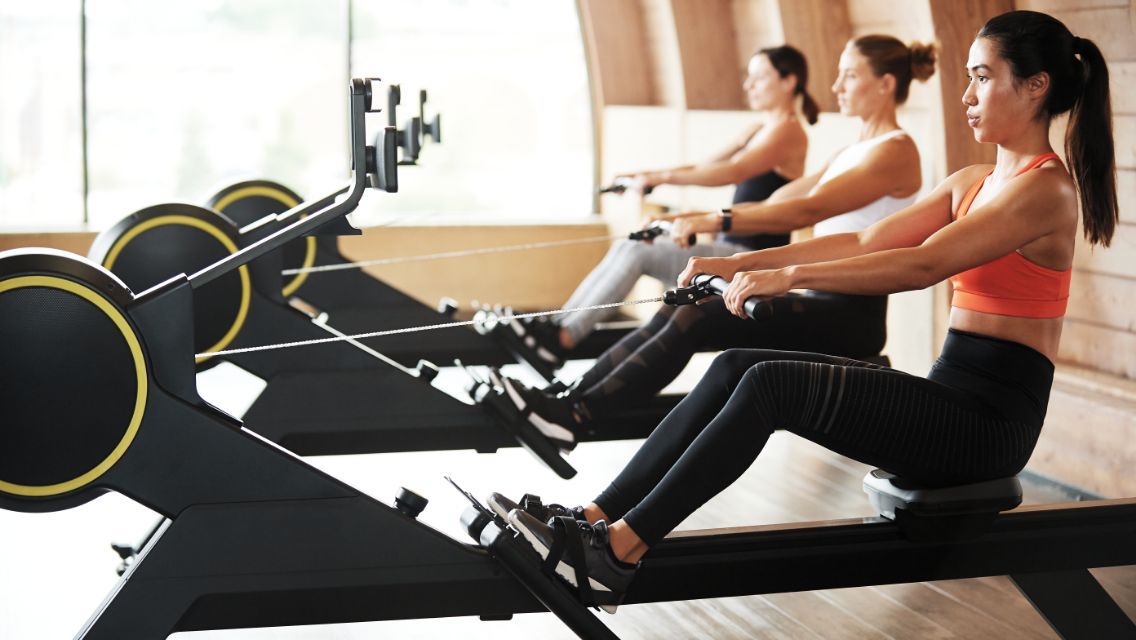
3. Rower
I’ve found that most people gravitate to the traditional treadmill or elliptical for their cardio routine. While these staples can be great, I’d encourage everyone to switch things up with the rower every couple of months or so.
Unlike typical pieces of cardio equipment, the rower does an amazing job recruiting the use of muscles in your back, midback, and glutes. Similar to the sled push, it’s also great for interval training without the fear of falling off. Plus, it has the advantage of being able to speed up and slow down easily so you can make the most use of your time with any time-based interval training (for example, 60 seconds of work to 30 seconds of rest).
Row machines also provide concise and useful data output on the screen to give real-time feedback of how hard you’re working.
4. Assisted Pull-Up/Dip Machine
From my experience as a coach, I’ve seen that achieving the first pull-up is one of the most empowering fitness milestones for my clients to reach. I’ve also noticed that there often is a huge mental hurdle to overcome when working towards it.
Enter the assisted pull-up/dip machine. It’s large and needs to be stepped into to be used correctly, and although it might seem intimidating at first, it’s sure to become a staple once you give it a try.
Unlike bands or static holds which are often used to work toward doing pull-ups, the assisted pull-up/dip machine allows the load to be easily adjusted so that you can see a near-linear progression toward this milestone. The resistance works opposite to nearly every other machine you might be used to: the lower the pin in the weight stack, the easier the movement is, and vice versa.
Even if you’re a seasoned exerciser or can already do pull-ups, I find that most people need to incorporate more pulling movements and latissimus dorsi (lat) and back work into their routine. This machine is a great way to do that.
5. Hack Squat/Freemotion Squat
Everyone ought to work on squatting to the best of their ability to support functional, everyday living and a healthy body composition. But surprisingly, the movement pattern that it demands for proper execution is most certainly not a given, especially considering how much of the day most of us spend seated.
Over the last decade or so, compound movements (such as the barbell squat) have gotten a lot of rightful attention for their functional benefits. While some fitness professionals may claim they’re superior to machine work, I always say that it depends on the client and situation. A well-executed barbell squat, for example, takes more technical ability than meets the eye, and it can take years to master.
Using the hack squat or Freemotion squat machines is a fantastic way to build leg strength in a safe and effective way. For most people, it’s possible to achieve more return on investment for your time in terms of gaining leg strength than with barbell work, since we don’t want to load up the barbell with more weight (to build strength) until your technique is mastered (which again, takes time and patience).
If you’re a fan of the leg press, I encourage you to throw machine squats into your routine too. They can add a weight load to your shoulders and increase resistance on both your core and glutes, while pressing your feet to the ground in a more natural standing position. It’s a great alternative to challenge your body differently.
Lastly, for those who rely on body-weight exercises for lower-body work, using the hack squat or Freemotion squat machines is a good place to start if you’re looking to progress a bit more. And if you’re a little more advanced and looking for a challenge, this machine additionally caters well to single-leg isolation movements.
As you progress through your fitness journey, I encourage you to leverage new movements, tools, and machines to help challenge and change your strength, ability, and athletic potential. If you have questions about how any of the machines above might fit into your program, or if you want to customize your approach, connect with a fitness professional for help.


